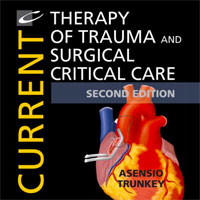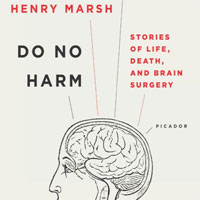Tag: surgery
Effect of Antibiotic Prophylaxis on Surgical Site Infections Following Removal of Orthopedic Implants
In this randomized clinical trial that included 470 patients who were undergoing surgery for removal of orthopedic implants used for treatment of below-the-knee fractures, surgical site infection occurred in 12.9% of patients... read more
Development and Validation of an Empiric Tool to Predict Favorable Neurologic Outcomes Among PICU Patients
This proposed prediction tool encompasses 20 risk factors into one probability to predict favorable neurologic outcome during ICU stay among children with critical illness. Future studies should seek external validation and... read more
Burnout and Stress Among US Surgery Residents
Burnout among physicians affects mental health, performance, and patient outcomes. Surgery residency is a high-risk time for burnout. We examined burnout and the psychological characteristics that can contribute to burnout... read more
Current Therapy of Trauma and Surgical Critical Care
A comprehensive and contemporary summary of the treatment and post-operative management of traumatic injuries. The concise format makes it ideally suited for everyday use, and new, full-color illustrations highlight the most... read more

Regional Variation of Computed Tomographic Imaging and the Risk of Nephrectomy
In this analysis of 306 hospital referral regions, regional CT risk was significantly correlated with nephrectomy, and scanning an additional 1000 Medicare beneficiaries was associated with 4 additional nephrectomies. Beneficiaries... read more
New Replacement Heart Valve Grows as Child Gets Older
Children born with congenital heart valve defects number in the thousands each year, yet there are simply no artificial cardiac valves available that were designed specifically for babies. Multiple heart surgeries have to... read more
Your plumber offers a money-back guarantee. Should your doctor?
One recommendation is that patients shouldn't have to pay for their care if they experience certain avoidable complications up to 90 days after surgery. A participating hospital would guarantee its work, or patients would... read more
3D-Printed Organs Could Let Surgeons Practice and Plan Dangerous Operations
An international team of researchers has used 3D-printing technology to produce individually-tailored model organs. These dummy organs could one day improve your chances of surviving surgery, by allowing doctors to plan and... read more
Intra-Abdominal Hypertension and Abdominal Compartment Syndrome
Intra-abdominal hypertension (IAH) and abdominal compartment syndrome are increasingly recognized in both medical and surgical critically ill patients and are predictive of death and the development of acute kidney injury.... read more
Restrictive or Liberal Red-Cell Transfusion for Cardiac Surgery
In patients undergoing cardiac surgery who were at moderate-to-high risk for death, a restrictive strategy regarding red-cell transfusion was noninferior to a liberal strategy with respect to the composite outcome of death... read more
Definitive Global Transfusion Study Supports Patient Safety and Outcomes
Lower thresholds for blood transfusions during cardiac surgery have proven to be safe and provide good patient outcomes compared to traditional thresholds, according to the largest research study ever performed in this area.... read more
Do No Harm: Stories of Life, Death, and Brain Surgery
With astonishing compassion and candor, leading neurosurgeon Henry Marsh reveals the fierce joy of operating, the profoundly moving triumphs, the harrowing disasters, the haunting regrets and the moments of black humor that... read more

Is assembly line surgery better for the patient?
A friend of mine recently underwent a total knee replacement. Although he did well and was pain-free, he did say that he felt he was on an assembly line. I asked him what he meant. As he was talking, I flashed back 30 years,... read more
Surgeons Are Using Social Media to Share and Learn New Skills
Learning from others' experiences is an important aspect of professional development in surgery. That’s why academic surgical departments across the globe hold weekly Morbidity and Mortality (M&M) conferences that gather... read more
The Role of Physiotherapy in Enhanced Recovery After Surgery in the ICU
Enhanced recovery after surgery (ERAS) is an evidence-based, multimodal approach to optimising patient outcomes following surgery. The role of physiotherapy within ERAS and intensive care units (ICU) is important. Patients... read more
Levosimendan in high-risk patients undergoing cardiac surgery
Levosimendan reduces mortality in patients with preoperative severely reduced LVEF but does not affect overall mortality. Levosimendan reduces the need for RRT after high-risk cardiac surgery. Six RCTs were included in the... read more
Does Early Mobilization Reduce Time in the Surgical ICU?
Is early mobilization in the surgical intensive care unit (ICU) beneficial? Here is a multicenter, randomized, controlled trial in five university hospitals, where they recruited a total of 200 patients.... read more
Patient-reported Outcomes Included Into Daily Practice
Measuring relevant outcomes in a timely manner is a priority in a health care system increasingly focused on the delivery of high-value care. Most quality measures focus on care processes or downstream outcomes such as survival;... read more
National Variation in the Use of Tracheostomy in Children Undergoing Congenital Heart Surgery
Variation in the usage of tracheostomy in infants and children undergoing congenital heart surgery exists across the country. High-tracheostomy centers had lower hospital charges. Late tracheostomy placement, higher congenital... read more
Frailty Association with Perioperative Morbidity in Patients After Ambulatory General Surgery Operations
Frailty is associated with increased perioperative morbidity in common ambulatory general surgery operations, independent of age, type of anesthesia, and other comorbidities. Surgeons should consider frailty rather than chronological... read more
Comparison of Postoperative Outcomes Among Patients Treated by Male and Female Surgeons
After accounting for patient, surgeon, and hospital characteristics, patients treated by female surgeons had a small but statistically significant decrease in 30 day mortality and similar surgical outcomes (length of stay,... read more
Intraoperative ketamine for prevention of postoperative delirium or pain after major surgery in older adults
Between Feb 6, 2014, and June 26, 2016, 1360 patients were assessed, and 672 were randomly assigned, with 222 in the placebo group, 227 in the 0·5 mg/kg ketamine group, and 223 in the 1·0 mg/kg ketamine group. There was... read more









